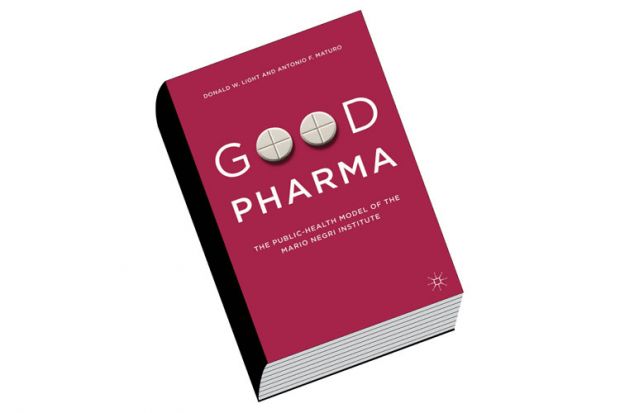Whatever you think of his politics, there was a certain magnificence to Yannis Varoufakis in the recent Greek crisis. Imagine if he had won. It would have been a victory straight from the pages of Asterix the Gaul.
Well, Good Pharma is straight from the pages of Asterix, except the little guys facing off against the imperial forces are Italian, standing up initially to the Franco-German pharmaceutical industry and latterly the Americans’. The irony is that, Ho Chi Minh-like, the little guys took their inspiration from the US way of doing transparent and egalitarian research in the 1950s, only to find themselves pitted against those they once admired.
This is the story of the Mario Negri Institute, based in a working class suburb of Milan. Mario Negri was a wealthy patron who, on his death in 1960, left a large sum of money to an upcoming researcher, Silvio Garattini, to support independent pharmaceutical research. At the time, new drugs were spilling out of the pharmaceutical industry in abundance; psychopharmacology had just come into being and Garattini played a part in its birth. New techniques to detect ever-smaller amounts of drugs, neurotransmitters and toxins were emerging, playing straight to Garattini’s strengths. He and his collaborator Alfredo Leonardi set about building an institute centred on the new drugs and techniques.
As they tried to make their way in the world, they were met with bemusement at their presumption that anyone stood to gain anything from linking to them. Five decades later, after they faced down the Italian government, European regulators, GlaxoSmithKline and endless pharmaceutical companies, no one even thinks about dismissing them.
Major discoveries in cardiology have come from their organisation of some of the first mega-trials in medicine; major discoveries in chemotherapy from their pioneering research on new compounds; major discoveries in environmental toxicology from their abilities to detect toxins and drug residues in the environment. There are probably very few families anywhere whose health has not benefited from the institute’s discoveries, or its resistance to industry or political efforts to cut corners or fudge data.
The institute continues to grow without ever having patented any of its many discoveries or concealing any data from experiments that didn’t work out or accommodating any of their trials to industry’s wishes. Reading this compelling and valuable history, it feels that if there is a sign saying conventional wisdom points left, Mario Negri has gone right, until you realise that what has happened is that what the institute does was once widely supported, and it’s the field that has gone in the opposite direction.
Almost everyone has heard of the Cochrane Collaboration, the global non-profit organisation that systematically reviews clinical trials, but Mario Negri was pioneering these paths 30 years earlier, across the full range of medical disciplines. Hard-bitten ex-army-type insiders such as Tom Jefferson, who took on Roche over its claims about Tamiflu and won, view the Mario Negri operation with awe, but of course it’s more than it’s worth for industry to let anyone know that there is another way of doing things. If this caught on in medicine, who knows – the example might spread to the wider economy.
David Healy is professor of psychiatry, Bangor University.
Good Pharma: The Public-Health Model of the Mario Negri Institute
By Donald W. Light and Antonio F. Maturo
Palgrave Macmillan, 300pp, £59.50
ISBN 9781137388339 and 374332 (e-book)
Published 1 July 2015
POSTSCRIPT:
Print headline: The little guy and his magic potions
Register to continue
Why register?
- Registration is free and only takes a moment
- Once registered, you can read 3 articles a month
- Sign up for our newsletter
Subscribe
Or subscribe for unlimited access to:
- Unlimited access to news, views, insights & reviews
- Digital editions
- Digital access to THE’s university and college rankings analysis
Already registered or a current subscriber?




